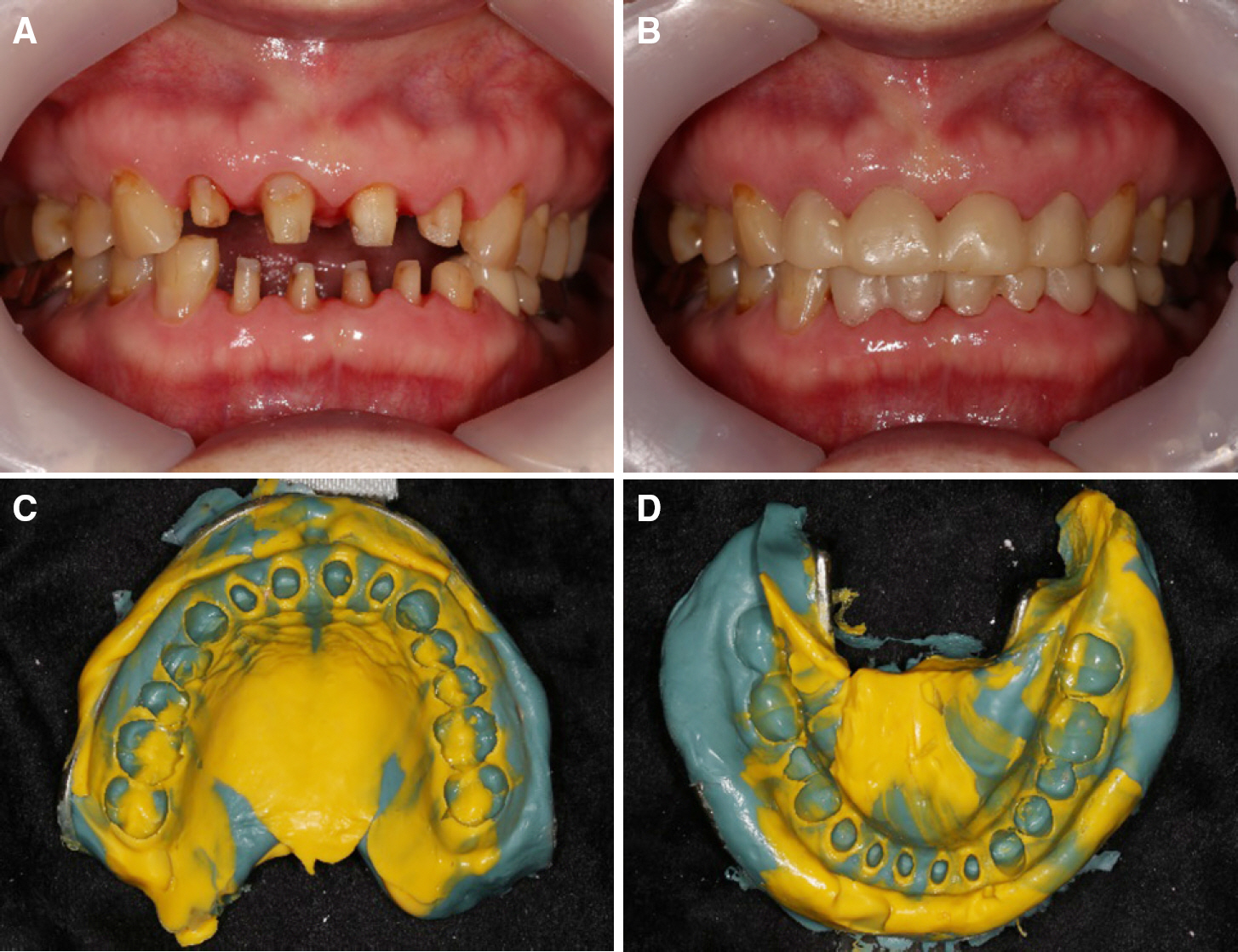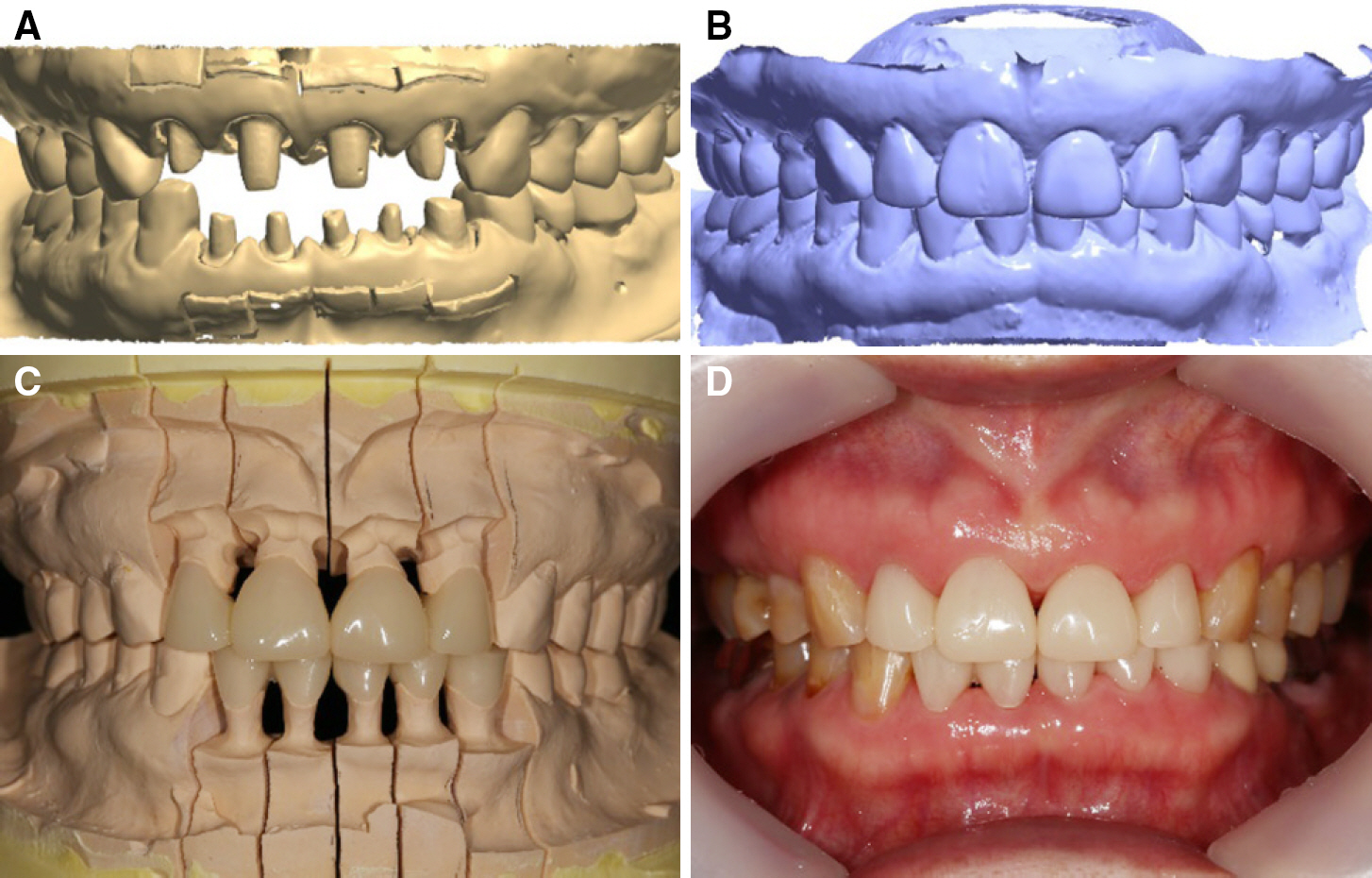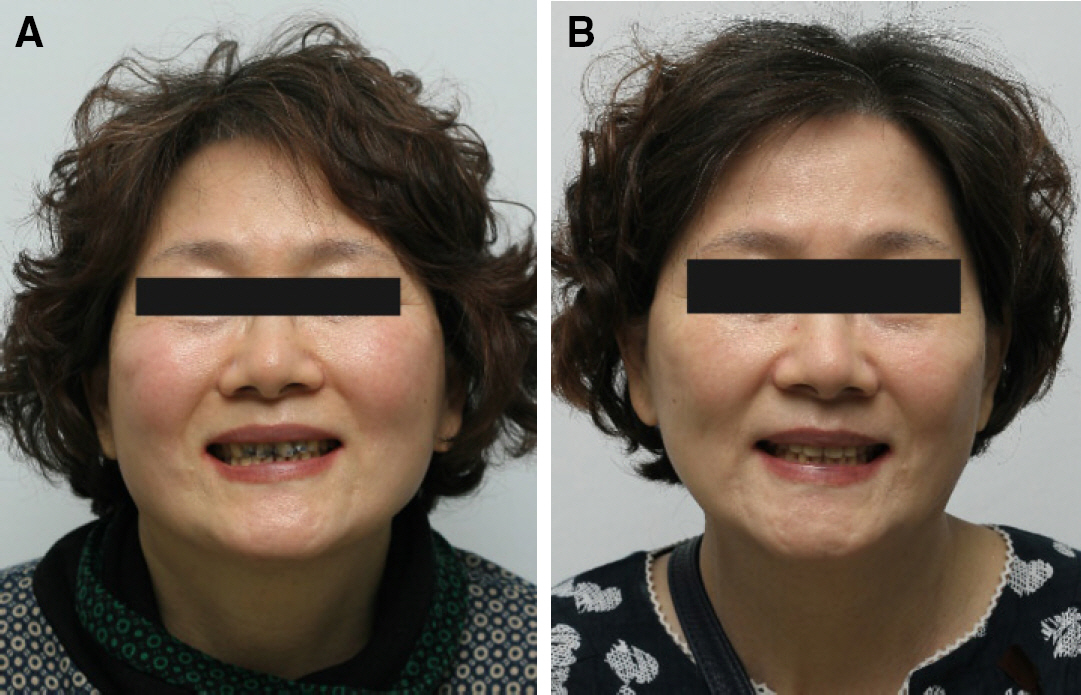J Korean Acad Prosthodont.
2016 Jul;54(3):291-297. 10.4047/jkap.2016.54.3.291.
Rehabilitation using twin-stage method for a Sjögren's syndrome patient with severe discoloration and attrition on upper and lower anterior teeth
- Affiliations
-
- 1Department of Prosthodontics, School of Dentistry, Chonnam National University, Gwangju, Republic of Korea. ykd@jnu.ac.kr
- KMID: 2344870
- DOI: http://doi.org/10.4047/jkap.2016.54.3.291
Abstract
- Patients with Sjögren's syndrome usually suffer from teeth discoloration and attrition due to xerostomia. If the anterior teeth are badly worn, problems such as loss of anterior guidance, occlusal disharmony, and limited space for restoration may occur. However, ideal occlusion is obtained in both centric and eccentric relation by regaining the disocclusion of the posterior teeth through the anterior and lateral guidance using twin-stage method. In this case, rehabilitation was performed for a Sjögren's syndrome patient with maxillary and mandibular incisor's severe attrition and teeth discoloration by using twin-stage method.
Keyword
Figure
Reference
-
1.Fox RI., Robinson CA., Curd JG., Kozin F., Howell FV. Sjögren's syndrome. Proposed criteria for classification. Arthritis Rheum. 1986. 29:577–85.
Article2.Hobo S. Twin-tables technique for occlusal rehabilitation: Part I-Mechanism of anterior guidance. J Prosthet Dent. 1991. 66:299–303.
Article3.Hobo S. Twin-tables technique for occlusal rehabilitation: Part II-Clinical procedures. J Prosthet Dent. 1991. 66:471–7.
Article4.Hobo S., Takayama H. Twin-stage procedure. Part 1: A new method to reproduce precise eccentric occlusal relations. Int J Periodontics Restorative Dent. 1997. 17:112–23.5.Dawson PE. Functional occlusion: From TMJ to smile design. St. Louis: Mosby;2007. p. 159–77.6.Williamson EH., Lundquist DO. Anterior guidance: its effect on electromyographic activity of the temporal and masseter muscles. J Prosthet Dent. 1983. 49:816–23.
Article7.Cho Y., Raigrodski AJ. The rehabilitation of an edentulous mandible with a CAD/CAM zirconia framework and heat-pressed lithium disilicate ceramic crowns: a clinical report. J Prosthet Dent. 2014. 111:443–7.
Article8.Karl M., Graef F., Wichmann M., Krafft T. Passivity of fit of CAD/CAM and copy-milled frameworks, veneered frameworks, and anatomically contoured, zirconia ceramic, implant-supported fixed prostheses. J Prosthet Dent. 2012. 107:232–8.
Article
- Full Text Links
- Actions
-
Cited
- CITED
-
- Close
- Share
- Similar articles
-
- A Case of Treatment with Steroid and Hydrochloroquine of Thrombocytopenia in Primary Sjögren's Syndrome
- A Case of Sjögren-Larsson Syndrome
- Longitudinal Changes of the European League Against Rheumatism Sjögren's Syndrome Patient Reported Index in Korean Patients with Primary Sjögren's Syndrome
- Oral rehabilitation of a young adult with amelogenesis imperfect using metal-ceramic restoration: a clinical report
- A Case of Lacrimal Gland MALT Lymphoma in a Patient with Primary Sjögren's Syndrome











